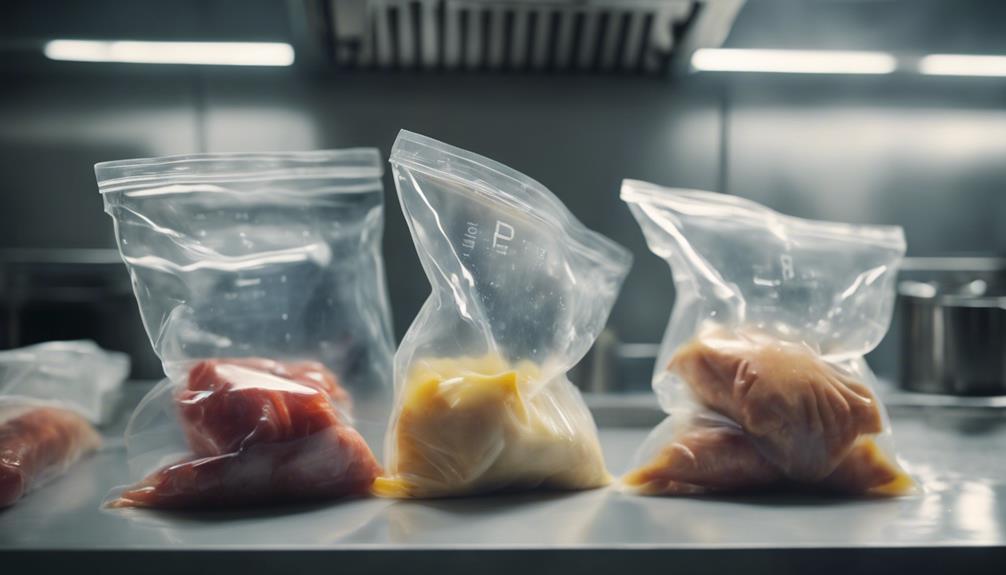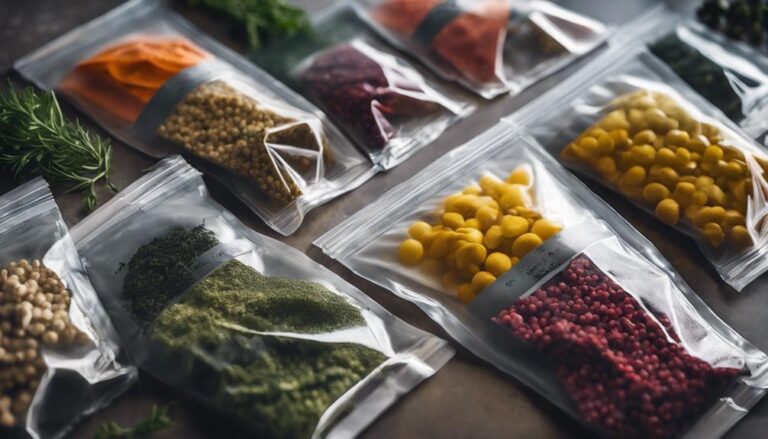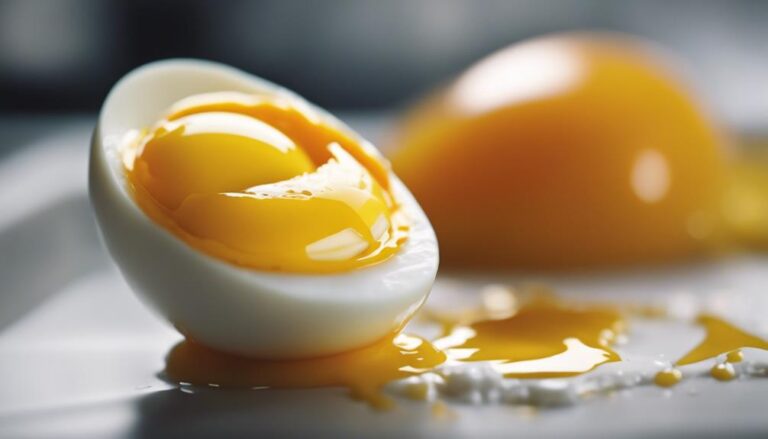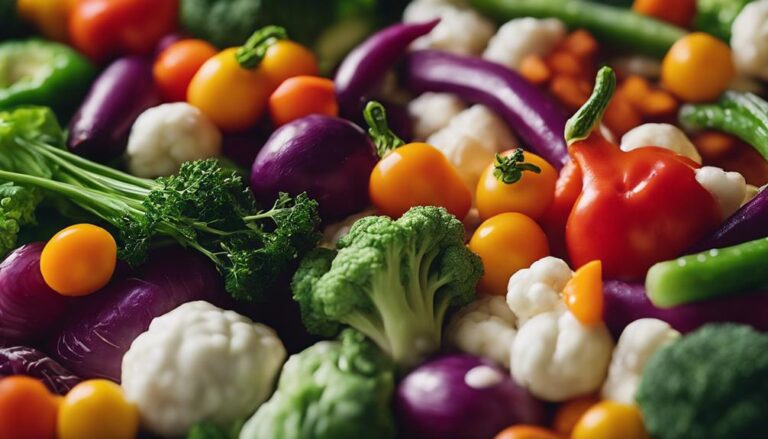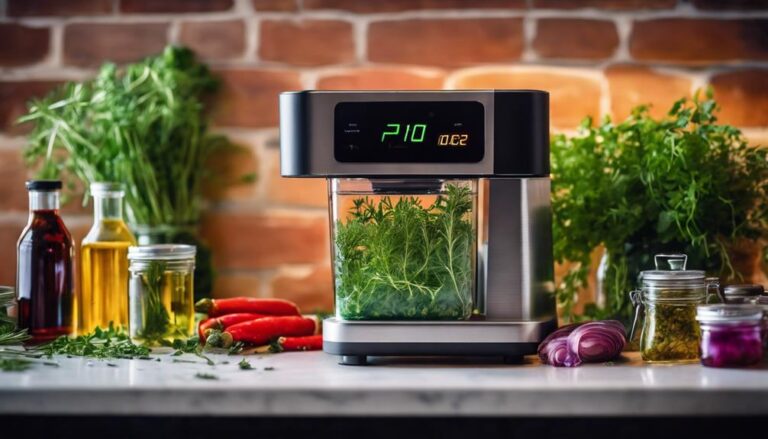Sous Vide Temperature Guide: The Secret to Perfect Cooking
Mastering the exact temperatures in sous vide cooking is essential for perfect results. Choose recommended temperatures for consistent and safe cooking. Different meats have specific ranges for ideal doneness. Control time and temperature for juicy, tender results. Guarantee food safety by pasteurizing proteins effectively. Want to enhance your cooking skills further?
What You Will Learn Here
- Precision temperature selection is crucial for consistent and safe sous vide cooking.
- Temperature impacts meat texture, with collagen breakdown affecting tenderness.
- Different meats have specific temperature ranges for optimal results.
- Specific time and temperature combinations ensure perfect doneness for various foods.
- Following guidelines ensures safe, enjoyable sous vide cooking with ideal textures and flavors.
Importance of Precision Temperature Selection
Precision temperature selection in sous vide cooking is important for achieving consistent and desired results. When using the sous vide method, each type of food requires specific temperatures to reach the perfect texture and flavor. By following recommended temperatures closely, you guarantee that your dishes turn out just the way you want them every time.
Additionally, precise temperature control in sous vide cooking plays a pivotal role in ensuring food safety by effectively pasteurizing proteins.
To achieve the best outcomes, factors such as food thickness, densities, initial temperature, and proper vacuum sealing must be considered. Furthermore, rapid cooling and proper equipment handling are essential for maintaining sous vide temperature safety standards.
Effects of Temperature on Meat Texture
Indulging in sous vide cooking can transform the texture of your meat based on the temperature you choose. The effects of temperature on meat texture are important in sous vide cooking.
When meat is heated, proteins contract, which can lead to moisture loss and dryness in well-done steaks. However, at higher temperatures, collagen breakdown occurs, resulting in a tender, fall-apart texture that's desirable in many dishes.
Meat begins to tenderize above 120F (48.9C) but starts losing moisture significantly above 140F (60C). For that melt-in-your-mouth texture commonly found in braised meats, collagen needs to break down at 154F (68C).
Sous vide cooking allows for precise temperature control, impacting the juiciness and mouthfeel of your meat. By understanding the relationship between temperature and meat texture, you can achieve perfect cooking results that will delight those you serve.
Common Temperature Ranges for Meat
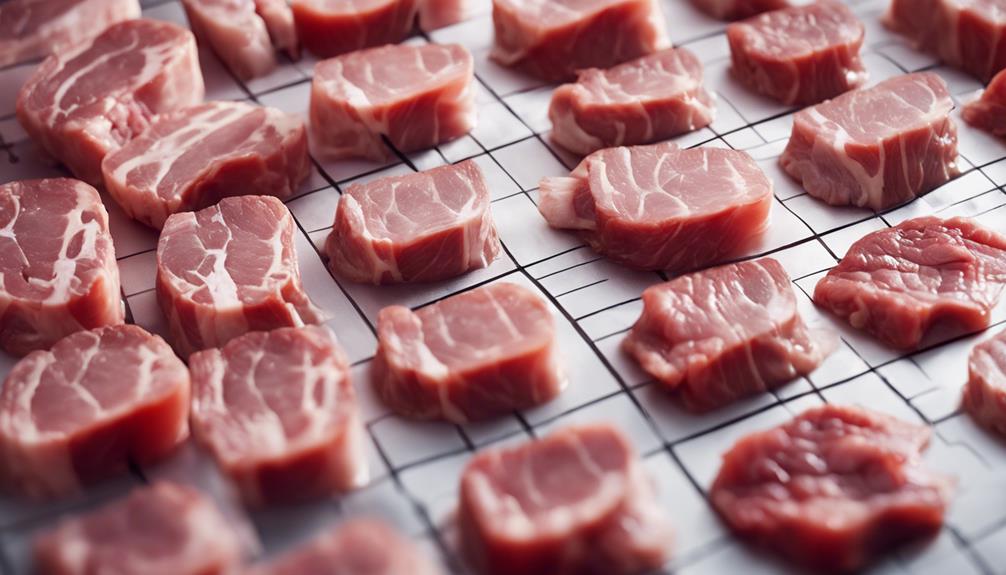
Exploring the recommended temperature ranges for various meats in sous vide cooking is essential for achieving ideal doneness and texture. When cooking steak sous vide, aim for 129-134°F (53-57°C) for rare, 135-144°F (57-62°C) for medium-rare, and 145-154°F (63-68°C) for medium doneness.
Pork can be cooked sous vide at 140-145°F (60-63°C) for extra-juicy tenderness, 146-155°F (63-68°C) for traditional tenderness, or 156-165°F (69-74°C) for slow-cooked results.
For chicken, try 140-145°F (60-63°C) for white meat and 150-165°F (66-74°C) for dark meat to ensure juicy and tender outcomes. Each meat has a specific water bath temperature range that guarantees the best results.
Specific Time and Temperature Combinations
To achieve perfect doneness and texture in your sous vide cooking, focus on specific time and temperature combinations for each type of food. When cooking beef, aim for medium-rare doneness by setting the temperature to 129°F (54°C) and cooking for 1 to 4 hours.
For poultry, guarantee safety by cooking at 140°F (60°C) for at least 30 minutes. Pork becomes juicy and tender at 145°F (63°C) for 1 to 4 hours, with Pork Tenderloin reaching perfection at this temperature.
Fish achieves perfect flakiness when cooked at 122°F (50°C) for 30 minutes to 1 hour. Vegetables maintain their vibrant colors and nutrients at 183°F (84°C) for 30 minutes to 1 hour.
Achieving Safe and Enjoyable Cooking
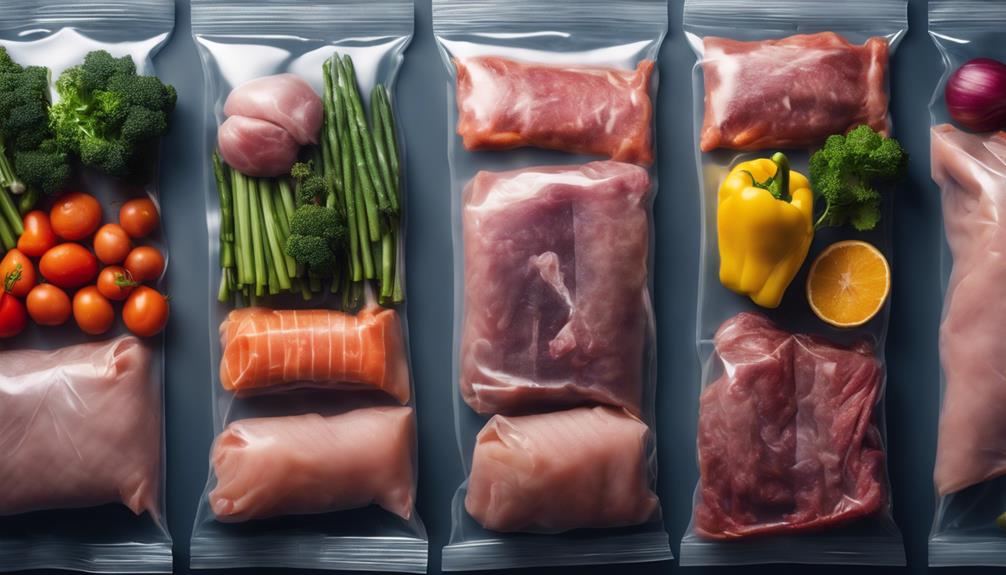
For safe and enjoyable sous vide cooking, precise temperature control is essential to guarantee excellent results and dining satisfaction. By making sure that you adhere to specific time and temperature combinations, you not only achieve the desired textures in your dishes but also prioritize food safety by pasteurizing proteins and eliminating harmful bacteria.
Factors such as food thickness, densities, initial temperature, and vacuum sealing play vital roles in maintaining precise temperature control throughout the cooking process. It's imperative to follow recommended temperatures, practice rapid chilling, and handle your equipment properly to guarantee the safety of your sous vide cooking.
Frequently Asked Questions
What Is the Perfect Temperature for Sous Vide?
For perfect sous vide cooking, you need to know the ideal temperature for each food type. Beef cooks best between 129-140°F, poultry at 140-165°F, pork from 135-160°F, and fish/seafood at 120-140°F for flavor and texture.
Is 4 Hours Too Long to Sous Vide a Steak?
Sous vide time matters for steak texture. Four hours might soften it more than you'd like. Try 1-2 hours for medium-rare. Adjust for perfection. Experiment to find your balance of tenderness and flavor.
How Do Professional Chefs Use Sous Vide?
When using sous vide, professional chefs elevate their craft with precise temperature control, flavor infusion, and texture mastery. They rely on sous vide equipment for cooking secrets, ingredient pairings, and time management, showcasing culinary expertise and creating unforgettable dishes.
Is Sous Vide Chicken at 150 Safe?
Cooking chicken sous vide at 150°F is safe and precise. Make sure chicken reaches and maintains temperature for at least 4.2 minutes to pasteurize and kill bacteria. Sous vide provides control for safe, juicy poultry dishes.
Conclusion
Now that you know the secret to perfect cooking with sous vide, you can take your culinary skills to the next level.
By mastering temperature control, you can achieve tender, juicy, and flavorful results every time.
So next time you cook meat, remember to select the right temperature, and watch as your dishes impress everyone at the table.
Happy cooking!
